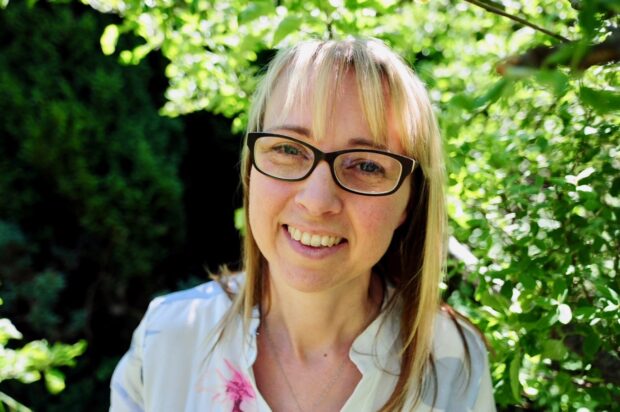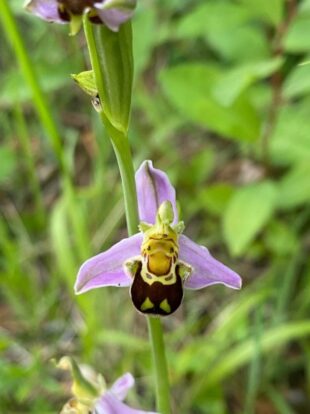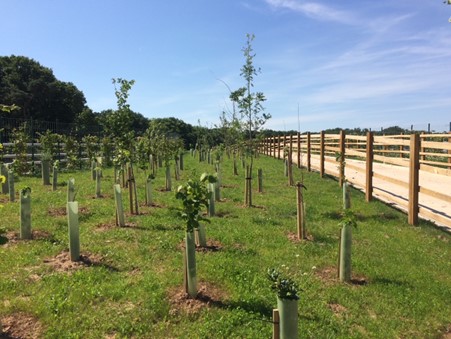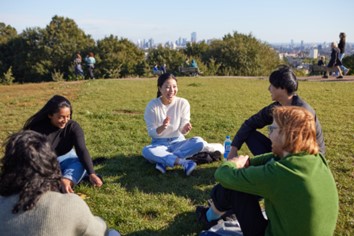
By Clare Warburton, Deputy Director for Sustainable Development at Natural England
International Day of Women and Girls in Science (IDWGIS) is an annual UN event, which aims to highlight the work and achievements of women and girls in science, both now and across history. This year, IDWGIS is focusing on the UN Sustainable Development Goals (SDGs). Sustainable Development is how we live now if we want a better tomorrow, by meeting present needs without compromising the chances of future generations to meet their needs.
As a child at school, I always had a passion for the arts and science. This passion made it difficult to make subject choices. But ‘choose’ I must, said my career’s teacher, and so at the age of 16, I took the science route. At 18, I ventured off to university to become a doctor. But as I went through my first three years as a medical student, I realised things were not working out as I had anticipated. For some reason, I felt like a fish out of water, and so I decided to take a break from my studies.

As faith has always been a big part of my life, I set off to work at a faith-based centre called Lee Abbey. It was there, living by the wild Devon coastline and in a community of musicians and artists, I realised science and creativity aren’t incompatible. They are happy bedfellows, especially in the beauty of nature. Take an orchid for example, science helps me to understand how it grows and the ecosystem within which it lives, but it’s through words, art and music that I can express my wonder at its beauty.
I became inspired to look at stories of women who had brought together nature and creativity, visionaries like Octavia Hill, one of the original founders of the National Trust, for example. When Octavia was 14, her family lost everything and she experienced first-hand how poverty was impacting Londoners. From that experience grew a strong belief in the importance of access to nature for human wellbeing. Her work in urban areas aimed to bring beauty, nature, arts and music to everyone. Her passion for these things, which were also close to my heart, reinvigorated a desire to continue my studies and work towards a science-based career, keeping creativity central to my work.
I re-applied for university - this time to do Environmental Science, and found a place where I felt a deep connection to my studies. After graduating, I joined the Countryside Commission - a predecessor to Natural England, the Government’s adviser on the natural environment. I joined the organisation to help nature thrive and so that more people could experience first-hand the wonder of being in nature.
I took breaks within my career to have children, returning to work part-time, and starting a new role in sustainable development, with a transport focus. It was this that sparked my interest in green infrastructure, how it can be designed to improve the wellbeing of people living in cities and creating places for nature to recover and thrive. I found a particular interest in road verges, green spaces, green bridges and green roofs; I’m proud of my part in making the A556 green bridge happen - being close to my home in Manchester, it quickly became a regular I-spy feature for the children on family road trips!

Now the children are older, I’m back to working full time to champion nature and green infrastructure - not just on roadsides, but across towns and cities for all its compelling benefits for nature, people and climate. I’ve recently started a new role as Natural England’s Sustainable Development Deputy Director. I’ll be bringing a creative mindset to my everyday work and looking for inspiring examples of transformational change, like the first development site to achieve all the UN Sustainable Development goals
If more cities and towns can be creatively designed and managed, with nature and communities at their heart, we will see nature and people thrive. This is something we set out to inspire at Natural England when developing the Green Infrastructure Framework and Design Guide.
Natural England’s People and Nature survey tells us that, for 82% of people ‘being in nature makes me happy’. With the cost-of-living crisis, ‘free’ places like local parks and greenspace, have become even more important. But the value of these spaces for the economy - estimated at £28.7 billion per year - often isn’t taken into account.

Green infrastructure in towns and cities provides places to relax, exercise, and spend time outdoors; cools urban areas; reduces flooding by allowing water to permeate the ground rather than overwhelm our drains; increases biodiversity and helps to reduce inequalities in access to nature. One of the key issues we identified within our research was that many parks and greenspaces aren’t designed with girls in mind, so it’s critical to engage them and give them a voice. This involves drawing on the creative ideas of numerous partners and local communities to make change happen. And change is starting to happen, with projects such as the ‘Greenspace & Us’ initiative showing the benefits of connecting people with nature through community projects.

My perspective has changed considerably since my early careers advice at school, and I’ve proved to myself that science and creativity can go together, through the exciting projects I’ve had a chance to be involved with. The key thing for me, has been working with partners and communities in towns and cities to put nature at their heart. For you, it could look very different, but wherever your career path takes you, always let your creative sparks fly!
3 comments
Comment by Cheryl Moran posted on
How wonderfully written , insightful and encouraging.
Comment by Leanne Penfold posted on
Lovely article Clare and great to hear more about your journey to the right career.
Comment by Dawn Jacks posted on
Great article Clare! One to share with children and young people for inspiration as they embark on their journey